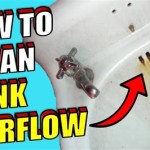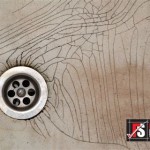Bathroom Sink Water Line Connections
A bathroom sink, a fundamental fixture in any home, relies on a network of water lines for its functionality. These lines, usually copper or PEX piping, deliver the water supply to the sink faucet and drain away wastewater. Understanding the intricacies of bathroom sink water line connections is crucial for both homeowners and plumbers, enabling efficient maintenance, repairs, and installations. This article delves into the fundamental aspects of these connections, shedding light on the various components involved and their significance.
Water Supply Lines
The water supply lines are the conduits that transport water from the main plumbing system to the bathroom sink faucet. They are typically made of copper or PEX piping, each with distinct advantages and disadvantages. Copper pipes are known for their durability and resistance to corrosion, but they are more expensive and prone to leaks. PEX piping, a more recent innovation, is flexible, economical, and less susceptible to leaks, making it a popular choice for modern plumbing systems.
The water supply lines connect to the faucet using shut-off valves, which allow you to turn off the water flow to the sink independently. These valves are typically located under the sink cabinet and readily accessible for repair or maintenance. The most common types of shut-off valves include: *
Angle Stop Valves:
This type of valve features a 90-degree bend, which allows it to be installed in a tight space. *Straight Stop Valves:
These valves offer a more traditional, straight design, making them easier to connect and operate. The choice of valve depends on personal preference and the configuration of the plumbing system. Regardless of the valve type, they all serve the same purpose: to regulate water flow to the sink faucet.Connecting the Water Supply Lines to the Faucet
Connecting the water supply lines to the faucet requires specific fittings and tools. Here's a step-by-step guide:
-
Shut Off the Water Supply:
Before starting any work, ensure the water supply to the sink is turned off using the shut-off valves. -
Prepare the Lines:
The ends of the water supply lines need to be prepared for connection. This involves cutting the lines to the appropriate length and threading the ends with a pipe threading tool. -
Attach Fittings:
The threaded ends of the supply lines are then connected to compression fittings, which are designed to secure the lines to the faucet. -
Connect to the Faucet:
The compression fittings are then connected to the inlets on the faucet's underside, usually marked “H” for hot and “C” for cold water. -
Tighten Connections:
Tighten the fittings using a wrench, ensuring they are securely fastened but not overtightened, which can damage the plumbing. -
Turn On the Water Supply:
Once all connections are secure, slowly turn the water supply back on, checking for leaks.
If you encounter leaks after reconnecting the water supply, it's essential to identify the source of the leak and tighten the fittings or replace any defective components.
Troubleshooting Bathroom Sink Water Line Connections
Occasional problems with bathroom sink water line connections are unavoidable. Understanding common issues can help homeowners diagnose problems and potentially fix them independently, or determine when professional assistance is needed. Here are some common issues and potential solutions:
-
Leaky Shut-Off Valves:
Over time, the seals within shut-off valves can deteriorate, causing leaks. Replacing the valve may be necessary to resolve the issue. -
Corrosion in Copper Pipes:
Copper pipes are susceptible to corrosion, which can weaken the pipes and lead to leaks. In severe cases, replacing the pipes may be required. -
Loose Fittings:
Loose fittings can cause water leaks. Tightening the fittings with a wrench can often resolve this issue. However, if the fitting is damaged, it needs to be replaced. -
Clogged Drain:
A clogged drain can prevent water from draining away, potentially leading to overflow and damage. -
Faucet Malfunctions:
Worn-out faucet parts can cause leaks, low water pressure, or difficulty operating the faucet. Replacing the defective parts can resolve these issues.
While some problems can be addressed with simple repairs, professional assistance is recommended for more complex issues, such as corrosion in pipes or major plumbing malfunctions.

Bathroom Sink Plumbing

Fitting A Bathroom Sink Or Bidet Step By Guide And

How To Plumb A Bathroom With Multiple Plumbing Diagrams Hammerpedia

How To Tighten Water Supply Line Connectors Diy Family Handyman

What Is The Bathroom Sink Plumbing Rough In Heights

How To Fit A Bathroom Sink Diy Guides Victorian Plumbing

20 Bathroom Sink Drain Parts How They Works Stopper Plumbing

How To Install A Vessel Sink Faucet

Bathroom Sink Plumbing Installation Diy Montreal

Faucet Supply Line Types And Installation Dengarden







